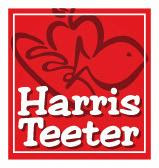Are you new to coupon use? Are you overwhelmed and confused about where you should start. I would like to suggest that you start with a Price Book. As you will see from this Guest Post by Mandie from I Heart Coupon Deals, the use of a Price Book helps you to determine the rock bottom price of products that you use on a regular basis. I invite you to read this post which is Part I of Mandie's very informative instructions on how to start your own Price Book.
Can I Get A Price Check On Aisle Three? - Price Books
How do you know if something is REALLY on sale? So maybe the product is in the store's ad or it's at the end of the aisle with balloons and a big sale sign, but is it really a good deal? Have you wondered when you are buying something if it's less expensive somewhere else in town? What about the same product five shelves below it… that is half the price, but is generic? You have a coupon for something you need, now where do you use it? You've been holding out on something you need, waiting for a coupon. You can wait no longer and must pay full price for it. Gasp! The next best thing is finding it at the lowest price!
The Problem:
The problem is that what a grocery store says is a good price and what actually is a good price aren’t always the same. When you walk into a store and see an item on sale for $2.99 that normally retails at $4.00, the automatic assumption is that it is a good deal. If you knew, however, that that same product is sometimes on sale for as low as $1.49, your perspective on the “good deal” would significantly change. The truth is that you’re pretty much in the dark when the store gives you both the retail and sale price without you having another reference to compare those prices against. A price book puts you in the driver’s seat in finding bargains instead of relying on the store’s word.
The Solution-Price Book:
In order to maximize the time spent on couponing, the coupon should strategically be used on the lowest price you can find the product for, especially when stockpiling. Figuring the cost per unit and comparing products is essential in getting the best bang for your buck! I encourage you to compare prices on the things your regularly buy. Start with ten things you buy frequently and log how much the items cost at the different stores you shop at, creating a price book. Always shop at one store? Consider looking around at other stores. If you try to comparing prices on everything you buy at once, this task can be overwhelming. I started out by comparing wipes and diapers around town, finding the best deals and went from there.
Generics:
If you are a brand loyal shopper, give generic products a try! Although it may not always work out, I have found that most of the time, I truly can't tell a difference. There are some things I have tried the generic on and wouldn’t buy again, but that list is small. (I have things like Hidden Valley Ranch and Heinz Ketchup on this list.) I’ve even read that many generic items are made in the same factory as name brands and just packaged differently!
My Price Check Book:
Without further ado, I'd like to share my Price Check List with you! I created it in Excel and have formulas set up in the cells to do the math for me on figuring the cost per unit. These are the things that I buy for my family on a regular basis. Yours may look very different as far as what products to include, but simply looking at how I have created the chart may help give you an idea of how to make your own Price Check List. Feel free to copy it, as you may buy several of the same products. This will be my never ending project, as prices change with seasons and sales, but will be something I always plan to have with me when I shop. I use tabs at the bottom of Excel to keep it organized. They look like this:

I am not totally finished pricing, so you’ll notice several holes, but hopefully I will inspire you to accept that you may never be finished. It will probably be a never ending project that you just keep adding to and updating, making your dollars stretch!
Download the Excel document HERE with Googledocs.
If that doesn't work for you, I can email you a copy of it in the Excel format. Just email me @ couponmomoftwo@live.com with PRICECHECK as your subject!
Here's a quick view in PDF form:
Price Check!
One more option: Click HERE to view the price check on a website.
A Few Things to Think About:
- As far as coupons go; Walmart accepts face value of the coupons, Dillons doubles coupons up to $1, and Aldi does not accept coupons.
- It wouldn't be worth it to drive to another store just to buy one item for a very small savings. Gas money!
- On my chart, the generics are usually Great Value at Wal-Mart, Kroger at Dillons, and all kinds of brands at Aldi.
- Many times I logged the smallest item for multiple coupon match ups and the largest items, for low unit price products that I may not have a coupon for.
- Food prices vary tremendously in different parts of the country.
- I am planning on adding on a few more stores, such as Sam’s Club and Food 4 Less.
- I am planning on a making a “cheat sheet” of my own personal rock bottom prices for a quick reference. I’ll share that later!
- PLEASE know that sometimes I had two little ones with me when I was pricing products and could have a few mistakes. Hopefully not, but that’s my disclaimer! =)
Below is another example of how you could set your price book up. I like the unit and sale price column, along with the date of sale column. This may be something I work up to

How to Make Your Own:
Start out small! You can even use your receipts for awhile to log your prices. Wanting a jump start? Grab a notebook and head to the store! I did this several times to collect my data. Your price book can be as simple or as elaborate as you'd like. You could use a notebook, use Excel, or even keep it on your cell phone.
Unit Price:
Keep a calculator handy for unit price calculations! To find any item's unit price, divide the cost of the item by the number of units. For an 8-ounce can of tomato sauce sold for $.32, enter .32, then divide by 8 to find the unit price of $.04. If you're making price book entries at the supermarket, you can often find the unit price calculated on the shelf tag. If you create your price book in Excel, use the formulas to save time.
Math Game:
Ok, I am kind of a math nerd. It’s my favorite subject and I do love working with numbers. Another advantage to the price book is that it turns shopping into a kind of challenge. You have a goal …to buy the products you have always purchased for less.
Sales:
Once you’ve recorded prices for awhile, you might recognize a pattern of when your regularly purchased items go on sale. Sales tend to cycle on products for about six to eight weeks.You can also decide whether you want to pass on an item because the price is considerably higher than you’ve recently paid for it. It won’t take long before you know which store typically carries an item at the cheapest price. In time, you’ll discover that you’ll have your own minimum price that you’re willing to pay for an item. If an item isn’t on sale, try holding off until it is. You will be able to do this because you stocked up on items when the price was low!
Benefits of a Price Book:
You'll also know, at a glance, when to buy in bulk! . Not all bulk purchases represent true bargains. Armed with a price book, you'll know to a fraction of a penny when to load up on the big bag of flour, and when to pass it up in favor of the supermarket's loss leader of the week. Most of all, a price book will reveal your target price: a realistic, rock-bottom price goal for each item listed in your book. Whether it's cereal for $1.99 per box or detergent at 9 cents per use, you'll have the information you need to know when a bargain is truly a bargain!
Resources that helped me along the way:
www.frugalvillage.com
http://www.organizedhome.com/ - So, what are your thoughts? Are price books something you already do or plan to do? I'd love to hear what you think?
































No comments:
Post a Comment